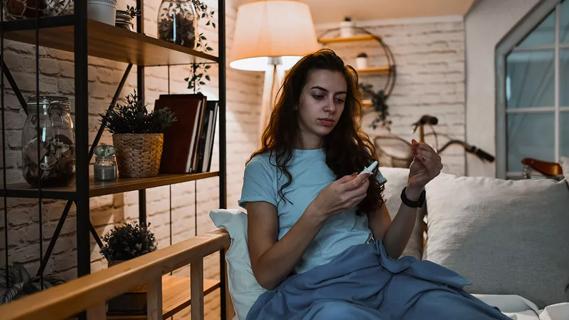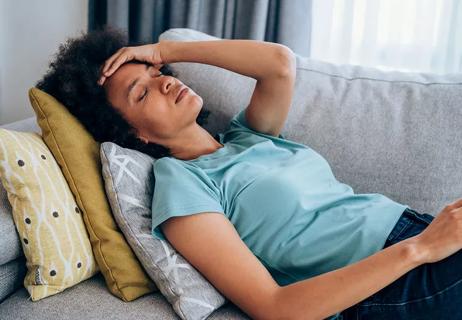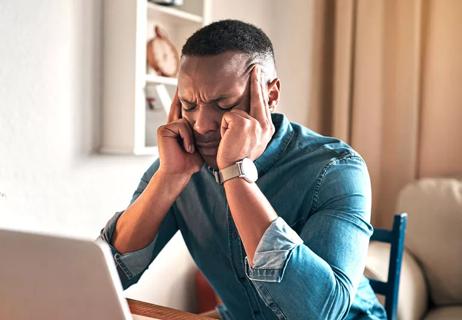They might look cool, but there’s no scientific evidence that daith piercings ward off pain

If you’re among the 12% of the U.S. population who get chronic migraines or episodic migraines, you know how intensely painful one of these can be. Unfortunately, there’s no permanent cure for the tendency to get migraines.
Advertisement
Cleveland Clinic is a non-profit academic medical center. Advertising on our site helps support our mission. We do not endorse non-Cleveland Clinic products or services. Policy
Maybe you’ve tried everything to get rid of the excruciating hurt, including pain-relieving pills, changes to your diet and aromatherapy.
You might even be willing to try an ear piercing for migraines.
While more of a fashion statement than a medical cure, a daith piercing comes with claims it will get rid of migraines forever.
So, does it work?
Headache specialist Emad Estemalik, MD, clears up the rumors about getting a daith piercing for migraines.
A daith piercing is a piercing in the place where the cartilage ridge inside your outer ear, called the helix, ends above the opening to your ear canal. An earring can be worn in the hole and you can get a daith piercing in one or both ears.
Acupuncture targets this area to relieve migraine headache pain, so the theory is that piercing this trigger point can permanently relieve migraines. But there’s no guarantee a daith piercing would be in the exact same spot used for acupuncture.
The exact causes of migraines are unknown, although they’re related to changes in the brain, as well as genetic causes. People with migraines may inherit the tendency to be affected by certain migraine triggers like fatigue, bright lights, weather changes and others.
Advertisement
For many years, scientists believed that migraines were linked to the expanding and narrowing of blood vessels on your brain’s surface. But it’s now believed that migraines are caused by inherited abnormalities in certain areas of your brain.
A migraine begins when hyperactive nerve cells send out impulses to your blood vessels, leading to the blood vessels expanding and the release of prostaglandins, serotonin and other inflammatory substances that cause your blood’s pulsing to be painful.
But Dr. Estemalik says there’s no medical research to support the theory that a daith piercing helps prevent migraines.
While some people swear that a daith piercing gets rid of their migraines, what’s probably at work is a temporary placebo effect, he notes.
A placebo is an inactive treatment, such as a sugar pill, that mimics an active medication or therapy. The placebo effect happens when you believe the placebo (whether a pill or, in this case, a piercing) is effective. In turn, the placebo affects the medical condition — and can positively affect the perception of pain.
“Placebos aside, there is no scientific evidence or clinical trial results that support ear piercing as a solution to migraines,” Dr. Estemalik says. “There’s nothing in literature I’ve heard of. Nothing I’ve read about. Nothing I have studied out there that supports such a procedure to treat migraine headaches. Receiving a piercing in that area will not alter the pain pathway of migraine.”
So, what about other popular ear piercings like a tragus piercing or rook piercing? Do they help prevent migraines?
First, let’s learn what these piercings are:
Some people have also claimed that these two piercings have helped alleviate migraines similar to a daith piercing. But Dr. Estemalik says that while studies have focused on daith piercings, there isn’t any scientific evidence that any kind of ear piercing can help with migraines.
To try to nip migraines in the bud, skip the jewelry and instead focus on the following:
Advertisement
And while it may be tempting to add an earring here or there in the hopes that it may help with your migraines, Dr. Estemalik says it’s better to focus on the tried-and-true methods.
“I would never recommend ear piercing for one of my patients,” he states. “The danger of infection from a piercing of this site strongly outweighs any unproven benefit.”
Advertisement
Learn more about our editorial process.
Advertisement

Among the options is a fast-acting medication that offers relief in as little as 15 minutes

A little can help, too much can hurt

Getting enough sleep, avoiding dietary triggers and reducing stress can provide relief

Your genes may offer some insight when learning about your migraine symptoms

Migraine length depends on your triggers, health history and whether they are chronic

If you’re experiencing the worst headache of your life, it may be time for a trip to the hospital

Dehydration, sleep issues and certain foods can lead to an early morning headache

Learn the pros and cons of CGRP inhibitors

Type 2 diabetes isn’t inevitable with these dietary changes

Applying a hot or cold compress can help with pain